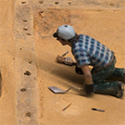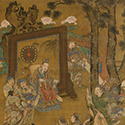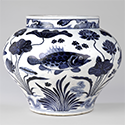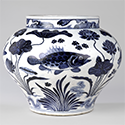|
|
| Show All 100 Results (Text Only) |
|
|
| Archaeological Footprint: Can we really know about the past from things left behind? [PDF] |
|
| The Field Museum
|
In this lesson plan students will analyze the objects in the Cyrus Tang Hall of China, either onsite at The Field Museum or online and think about how history is learned through objects. They will also theorize about what gaps can exist when stories are told through objects
Go to Museum Resource: https://www.fieldmuseum.org/sites/default/files/archaeological_footprint.pdf | |
|
|
| The Artist as Collector: Masterpieces of Chinese Painting from the C. C. Wang Family Collection |
|
| The Metropolitan Museum of Art
|
Online presentation of a 1999-2000 exhibition that "illuminates the entire tradition of scholar painting from its birth and early development in the Song and Yuan dynasties (10th to 14th century) to its later transformation and elaboration during the Ming and Qing dynasties (14th to 20th century)." With images of 14 related artworks dating from the 10th century to 1711.
Go to Museum Resource: https://www.metmuseum.org/exhibitions/listings/1999/chinese-painting | |
|
|
| The Art of Calligraphy in Asia |
|
| Princeton University Art Museum
|
“Calligraphy, the art of beautiful writing, was long considered the supreme art form in China, Japan, and Korea. This elevated status reflects the importance of the written word in East Asian cultures. In ancient China, early emperors asserted their power by engraving edicts or pronouncements on stone in their own calligraphic script. The elite members of society were scholar ¬officials, whose status was attained by their command of the written word. In addition to the central role played by writing in Chinese culture, the visual form of the language also contributed to the distinctiveness of the calligraphic tradition. The vast number and complexity of the characters that make up the Chinese script presented artists with a unique platform on which to explore the creative possibilities of design. The writing of Chinese characters-which was then widely adopted in Korea around the fourth century and in Japan in the mid-sixth century-was thought to be the purest visual manifestation of the writer's inner character and level of cultivation. It was the medium through which a person's thoughts, feelings, and artistry were best conveyed. In looking at a piece of calligraphy, we may admire the way a calligrapher manipulated the brush to create an object of beauty in which rhythmic energy is conveyed through strokes and dots done with ink. Changes in ink gradation, the relationship between characters, and the elegance of a single line can entice viewers regardless of the legibility of the text.
Go to Museum Resource: https://artmuseum.princeton.edu/object-package/art-calligraphy-asia/104193 | |
|
|
|
| Art of East Asia: Curriculum Guide |
|
| San Diego Museum of Art
|
The Museum’s Education Department has created a series of lesson plans to help introduce art into the classroom. The following lesson plans have been designed to help educators create elaborate classroom activities that will enhance their students’ understanding of works of art at The San Diego Museum of Art. See also: Exploring the Art of East Asia [PDF}.
Go to Museum Resource: https://www.sdmart.org/curriculum/ | |
|
|
| Arts of China: Teaching Toolkit |
|
| The Brooklyn Museum
|
Objects in the museums collection (dating from the Neolithic era to today) are featured in 12 lessons for 3rd grade teachers and students to explore Chinese art and culture. 3 sections — Geography and Environment (covering nature and symbolism); Believe Systems (with content on Confucianism, Daoism, and Buddhism); Global Exchange (with content on the Silk Road) — show how a variety of purposes (funerary, courtly, religious, poetic) combine to define traditional Chinese culture.
Go to Museum Resource: https://teach.brooklynmuseum.org/project/arts-of-china/ | |
|
|
| Arts of China: Teaching Toolkit |
|
| The Brooklyn Museum
|
Objects in the museums collection (dating from the Neolithic era to today) are featured in 12 lessons for 3rd grade teachers and students to explore Chinese art and culture. 3 sections — Geography and Environment (covering nature and symbolism); Believe Systems (with content on Confucianism, Daoism, and Buddhism); Global Exchange (with content on the Silk Road) — show how a variety of purposes (funerary, courtly, religious, poetic) combine to define traditional Chinese culture.
Go to Museum Resource: https://teach.brooklynmuseum.org/project/arts-of-china/ | |
|
|
|
| Show All 100 Results (Text Only) |









